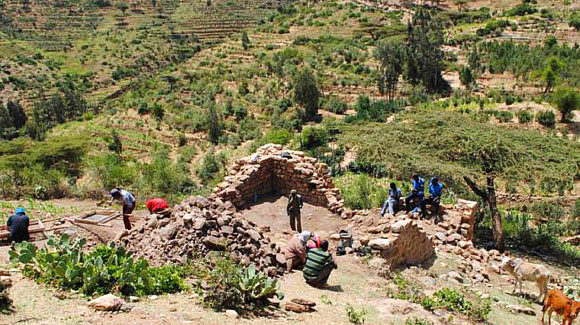
This is the first evidence which proves eastern Ethiopia was well connected with the Gulf, Egypt and India hundreds of years ago and highlights how skilled craftsmen traded with communities around the world and lived alongside people from different areas around the Indian Ocean and Red Sea.
"This discovery revolutionizes our understanding of trade in an archaeologically neglected part of Ethiopia," explained Timothy Insoll, an archaeologist and Al-Qasimi Professor of African and Islamic archaeology at the Institute of Arab and Islamic Studies at the University of Exeter, UK.
"Harlaa, which is 75 miles (120 km) from the Red Sea coast and 186 miles (300 km) from Addis Adaba, was a rich, cosmopolitan center for jewelry making and pieces were then taken to be sold around the region and beyond. The residents of Harlaa were a mixed community of foreigners and local people who traded with others in the Red Sea, Indian Ocean and possibly as far away as the Arabian Gulf."
The settlement has buildings and walls constructed with large stone blocks — leading local people to assume only those with enormous stature or strength could have built it, and encouraging legends about giants having inhabited the region.
"The archaeological findings suggest this place was home to a very mixed community," Prof. Insoll said.
"Local people were extremely keen for us to solve mysteries. Farmers had been finding strange objects, including Chinese coins, as they were working on their land, and a legend began that the area was home to giants. We have obviously disproved that, but I'm not sure they fully believe us yet. Some people have said the bodies we have discovered are the children of giants!"
The dig also revealed the ruins of a 12th-century mosque, evidence of Islamic burials and headstones as well as glass vessel fragments, rock crystal, carnelian, and glass beads, imported cowry shells, and pottery from Madagascar, the Maldives, Yemen and China, bronze and silver coins from 13th-century Egypt.
The architecture of the mosque is similar to those found in Southern Tanzania and Somaliland, showing connections between different Islamic communities in Africa.
Remains found in the dig suggest jewelers were making high-quality, delicate pieces in silver, bronze and semi-precious stones and glass beads.
They used some technology usually associated in that period with jewelers in India, suggesting trade or immigration from that country to Harlaa.
"We know jewelry was being made here for trading into the African interior, and materials to do this came in from the Red Sea, East African Coast and possibly India, but we don't know what was given in exchange for that jewelry," Prof. Insoll said.
"During the next stage of our archaeological research in this era, we hope to examine this by working on other sites up to 60 miles (100 km) away."



Reader Comments